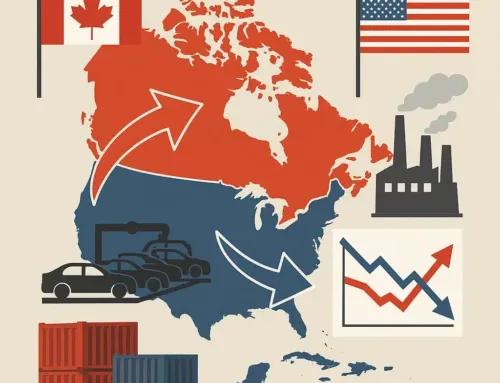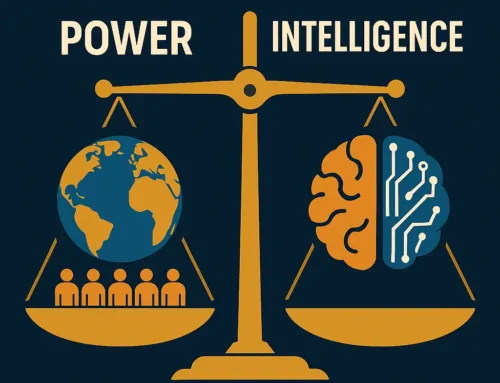
Approx. read time: 6.4 min.
Post: BRICS in Mitigating Western Sanctions on Russia: An Analysis of the Alliance’s Role
The Role of BRICS in Mitigating Western Sanctions on Russia
Abstract
Since 2014, Russia has faced escalating economic sanctions from Western nations, particularly following its annexation of Crimea and, more recently, its military intervention in Ukraine in 2022. These sanctions have significantly restricted Russia’s access to global financial markets, technology, and investment. In response, Russia has increasingly turned to the BRICS alliance—comprising Brazil, Russia, India, China, and South Africa—as a strategic platform to mitigate the impact of these sanctions. This article explores the role of BRICS in supporting Russia’s efforts to navigate the complex geopolitical landscape shaped by Western sanctions, analyzing the economic, political, and financial dimensions of this partnership.
Introduction
The global balance of power is undergoing a significant shift as emerging economies challenge the traditional dominance of Western nations. The BRICS alliance stands at the forefront of this transformation, representing a collective effort to promote a multipolar world order. For Russia, BRICS offers an avenue to counter Western sanctions by fostering alternative economic partnerships and financial mechanisms.
Understanding BRICS
Formation and Objectives
BRICS is an acronym for an association of five major emerging economies: Brazil, Russia, India, China, and South Africa. Initially coined as “BRIC” in 2001 by economist Jim O’Neill to describe fast-growing economies that would collectively dominate global growth, the group formally became BRICS with the inclusion of South Africa in 2010 1.
Key Goals of BRICS
- Economic Cooperation: Enhance trade, investment, and economic collaboration among member countries.
- Political Influence: Increase global influence by acting as a bloc in international forums, advocating for the interests of emerging economies.
- Development and Infrastructure: Establish institutions like the New Development Bank (NDB) to finance infrastructure and sustainable development projects.
- Financial Collaboration: Promote the use of local currencies in trade to reduce dependence on the U.S. dollar and Western financial systems.
Russia’s Support for BRICS
1. Economic Diversification
Western sanctions have targeted key sectors of Russia’s economy, including energy, finance, and defense, limiting access to international capital and technology 2. BRICS provides Russia with alternative markets and investment sources:
- China: Bilateral trade between Russia and China reached a record $146.9 billion in 2021, with plans to boost it to $200 billion by 2024 3. The Power of Siberia gas pipeline, operational since 2019, symbolizes deepening energy ties 4.
- India: India’s imports of Russian oil surged in 2022, making Russia one of India’s top oil suppliers 5. The two countries are exploring mechanisms to settle trade in local currencies to bypass sanctions 6.
- Brazil and South Africa: While trade volumes are smaller, these countries offer markets for Russian agricultural products, fertilizers, and technology cooperation.
2. Political Solidarity
BRICS serves as a platform for Russia to:
- Advocate for a multipolar world order, reducing Western hegemony.
- Receive diplomatic support or neutrality from member countries regarding contentious issues. Notably, BRICS statements often emphasize sovereignty and non-interference without directly condemning member actions 7.
3. Financial Alternatives
- New Development Bank (NDB): Provides funding for infrastructure and sustainable development projects, reducing reliance on Western-dominated institutions like the IMF and World Bank 8.
- Contingent Reserve Arrangement (CRA): A $100 billion financial safety net for members facing balance-of-payments crises 9.
- Local Currency Use: Efforts to conduct trade in national currencies help Russia bypass the U.S. dollar-centric financial system, mitigating the impact of sanctions on dollar transactions 10.
4. Investment in Development
- Infrastructure Projects: NDB has approved multiple loans for Russian projects, such as the $460 million loan for the development of hydropower plants in Karelia 11.
- Technological Collaboration: Joint ventures in sectors like nuclear energy and aerospace with BRICS partners help Russia access technology and markets.
Can Russia Avoid Western Sanctions Through BRICS?
While BRICS offers significant support, completely avoiding the impact of Western sanctions remains challenging.
1. Trade and Economic Alternatives
- Energy Exports: Increased oil and gas exports to China and India partially offset losses from Western markets 12. However, infrastructure limitations and long-term contracts mean that pivoting entirely to BRICS markets is not immediately feasible.
2. Currency and Financial Alternatives
- SWIFT Alternatives: Russia’s System for Transfer of Financial Messages (SPFS) and China’s Cross-Border Interbank Payment System (CIPS) are being linked to facilitate transactions 13.
- Digital Currencies: Discussions on a BRICS digital currency aim to further reduce reliance on Western financial systems 14.
3. Technological Dependencies
- Technology Access: BRICS nations may not fully compensate for restricted access to Western technology, particularly in high-tech sectors like semiconductors and advanced machinery.
4. Geopolitical Limitations
- Divergent Interests: Internal conflicts, such as the Sino-Indian border dispute, can limit cohesive action within BRICS 15.
- Global Integration: BRICS countries have varying degrees of integration with Western economies, and may be cautious about jeopardizing those ties.
Recent Developments
Expansion of BRICS
At the 15th BRICS Summit in Johannesburg in August 2023, the group announced the inclusion of six new members: Argentina, Egypt, Ethiopia, Iran, Saudi Arabia, and the United Arab Emirates 16. The expansion aims to enhance the group’s global influence and could provide Russia with additional partners to circumvent sanctions.
Energy Cooperation
Russia and China agreed to deepen energy cooperation, with plans to build new pipelines and increase trade in energy resources 17. India is also negotiating long-term oil supply deals with Russia at discounted rates 18.
Financial Integration
Efforts to establish a common payment system and increase the use of national currencies in trade have intensified. The NDB aims to lend 30% of its funds in local currencies, reducing exposure to dollar-related sanctions 19.
Conclusion
BRICS plays a crucial role in Russia’s strategy to mitigate the impact of Western sanctions by providing economic opportunities, financial alternatives, and political support. While the alliance cannot entirely shield Russia from the consequences of sanctions—especially in technology access and global financial integration—it offers significant avenues to alleviate some pressures.
As the world continues to move towards a more multipolar order, the importance of BRICS in global governance and economic cooperation is likely to grow. For Russia, deepening ties within this alliance is a strategic imperative to navigate current and future challenges posed by Western sanctions.
References
Footnotes
- “BRICS at 15: Emerging Economies in the Global Arena.” BRICS Information Portal, 2021. ↩
- Connolly, R. “The Empire Strikes Back: Economic Statecraft and the Securitisation of Political Economy in Russia.” Europe-Asia Studies, vol. 70, no. 10, 2018. ↩
- “China-Russia Trade Hits Record High in 2021.” Reuters, January 2022. ↩
- “Gazprom Starts Delivering Gas to China Via Power of Siberia Pipeline.” Bloomberg, December 2019. ↩
- “India’s Russian Oil Imports Hit Record High in June 2023.” The Economic Times, July 2023. ↩
- “India and Russia Explore Rupee-Ruble Trade Arrangement.” Financial Express, March 2022. ↩
- “XIV BRICS Summit Beijing Declaration.” BRICS Official Website, June 2022. ↩
- “About Us.” New Development Bank, 2023. ↩
- “BRICS Contingent Reserve Arrangement (CRA) Operationalized.” BRICS Information Portal, 2015. ↩
- “Russia Boosts Use of National Currencies in Trade with BRICS Nations.” TASS Russian News Agency, July 2019. ↩
- “NDB Approves USD 460 Million for Karelia Project in Russia.” New Development Bank, 2016. ↩
- “Russia’s Pivot to Asia: Energy Exports Shift Amid Sanctions.” Energy Intelligence, May 2023. ↩
- “Russia and China Move to Integrate Financial Messaging Systems.” Nikkei Asia, March 2022. ↩
- “BRICS Considers Common Digital Currency to Facilitate Trade.” CoinDesk, August 2023. ↩
- “Border Clashes Test Fragile Peace Between China and India.” The Guardian, September 2022. ↩
- “BRICS Announces Expansion to Include Six New Members.” BBC News, August 2023. ↩
- “Russia and China Sign New Energy Deals Worth Billions.” CNBC, February 2023. ↩
- “India Negotiates Discounted Oil Deals with Russia Amid Sanctions.” Reuters, April 2023. ↩
- “NDB Aims to Lend 30% in Local Currencies, Reduce Dollar Dependence.” South China Morning Post, July 2023. ↩
Related Videos:
Related Posts:
The Economic Fallout: Comparing Germany’s Post-WWI Recovery to Russia’s Current War Strategy
Russia ‘successfully tests’ its unplugged internet
Understanding the Israel-Gaza Conflict: Involvement of Iran, Lebanon, and Militant Groups
The Hidden Challenges of Remote Work: Understanding and Mitigating Loneliness and Disconnection









